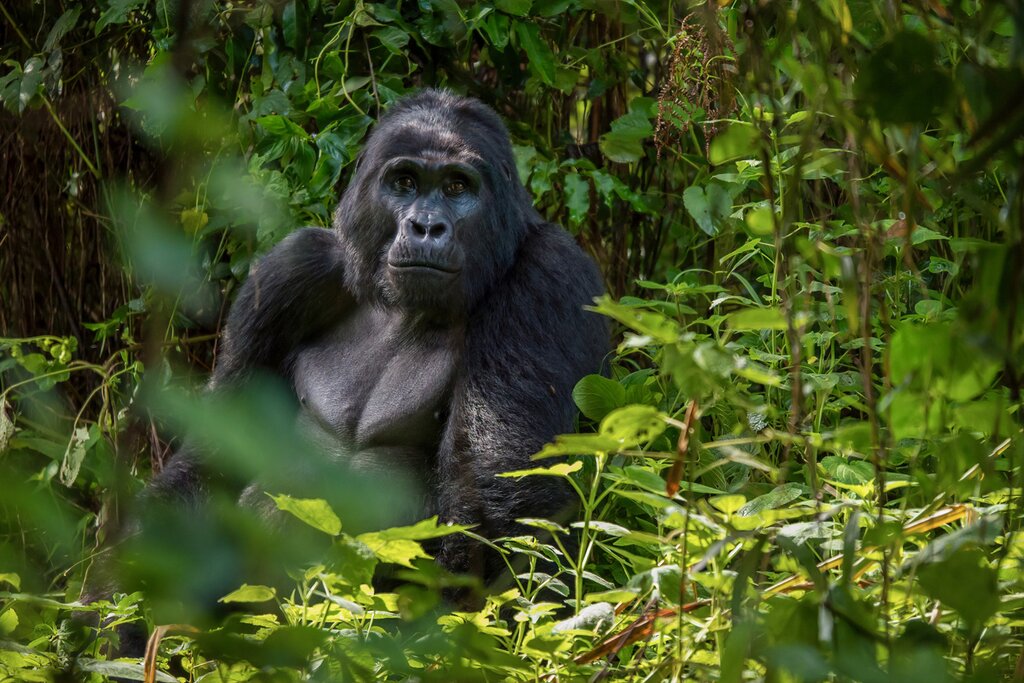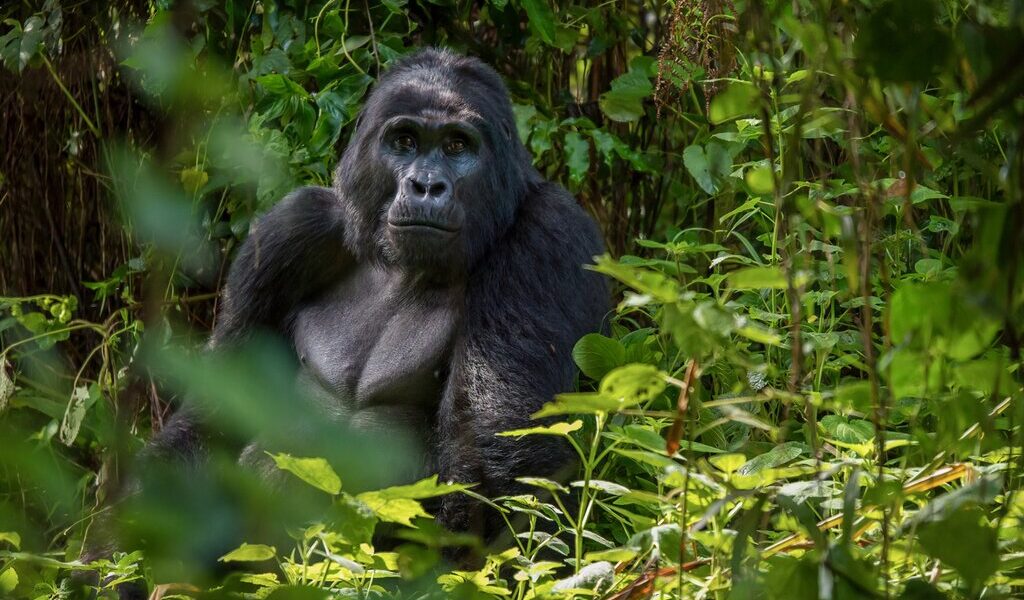
The best time to visit Uganda is in the dry season, especially from June to August, when gorilla trekking is at its best. Uganda has two dry seasons (June to August and December to February) and two wet seasons (September to November and March to May), bringing heavy rains and muddy trails, but without much fluctuation in temperature as it stays around 73°F (23°C). It has a tropical and relatively humid climate, with January and February being the hottest months.
## A Comprehensive Guide to Seasonal Travel Planning in Uganda
Uganda, often referred to as the “Pearl of Africa,” offers a tapestry of experiences that beckon travelers year-round. However, understanding the nuances of Uganda’s climate and seasons is crucial for crafting the perfect itinerary. While wildlife encounters remain a constant possibility, the ideal time to visit depends on your priorities, whether it’s maximizing game viewing opportunities, enjoying comfortable trekking conditions, or securing budget-friendly deals. This guide provides a detailed overview of Uganda’s seasons, highlighting the pros and cons of each, and suggesting the best activities and destinations for every time of year.
Uganda enjoys a tropical climate, characterized by consistently warm and pleasant temperatures. The primary distinction between seasons lies in the amount of rainfall, rather than dramatic shifts in temperature. South Uganda and the bustling capital of Kampala experience slightly milder conditions due to their proximity to the vast expanse of Lake Victoria, providing a moderating influence on the climate.
The long dry season, spanning from June to August, is widely considered the optimal time for travel. During this period, rainfall is minimal, ensuring uninterrupted travel plans and providing excellent visibility for wildlife safaris and exhilarating game drives. Hiking conditions are also at their best, particularly crucial for those planning to trek through the mountainous regions. It’s worth noting that temperatures will be cooler at higher altitudes, including the regions encompassing the gorilla parks. In contrast, the national parks situated in the southern part of Uganda tend to be warmer during the day and cooler at night.
Embark on unforgettable adventures, from encountering the renowned gorillas of the Virunga Mountains within the depths of Bwindi Impenetrable Forest or Mgahinga Gorilla National Park to witnessing the “Big Five” during a thrilling safari in Queen Elizabeth National Park. Immerse yourself in the local culture by spending time in an authentic Batwa Pygmy village. For those seeking aquatic adventures, Lake Victoria, the world’s largest tropical lake, provides opportunities for water sports. Alternatively, adrenaline junkies can experience the thrill of whitewater rafting in Jinja, the adventure capital of Uganda, nestled on the banks of the majestic Nile River.
During the wet seasons, which occur from March to May and September to November, heavy rains and muddy roads can present challenges to travel, hiking, and animal watching. However, these challenges are not insurmountable, and the wet seasons offer unique advantages. It can be an excellent time to delve into the cultural and historical attractions of Kampala. Furthermore, the tropical and relatively humid climate fosters lush forests, breathtaking scenery, and thriving wildlife. It is also the prime time for observing migratory birds, adding another layer of appeal for nature enthusiasts.
**Seasonal Breakdown: Pros, Cons, and Recommendations**
| **Seasons** | **Pros** | **Cons** | **Best for** | **Where to Visit** |
| —————————– | —————————————————————————————————————————————— | —————————————————————————————————————————————————– | ——————————————————————————————————————————————————— | —————————————————————————————————————————————————————————- |
| **Short Dry Season (Dec-Feb)** | Sunny, warm weather; minimal rainfall; peak animal spotting opportunities. | Gorilla permits need to be booked well in advance; increased tourist presence in national parks; potentially hot and dusty conditions; vegetation may brown. | Wildlife viewing, embarking on safaris, invigorating hikes, adrenaline-pumping adventure sports. | National parks teeming with wildlife, the adventure hub of Jinja, the stunning Rwenzori Mountains. |
| **Long Dry Season (Jun-Aug)** | Sunny, warm weather; minimal rainfall; peak animal spotting opportunities. | Gorilla permits need to be booked well in advance; increased tourist presence in national parks; potentially hot and dusty conditions; vegetation may brown. | Wildlife viewing, embarking on safaris, invigorating hikes, adrenaline-pumping adventure sports. | National parks teeming with wildlife, the adventure hub of Jinja, the stunning Rwenzori Mountains. |
| **Long Wet Season (Mar-May)** | Fewer tourists; more affordable accommodation options and potential discounts on permits; less intense heat; lush and vibrant vegetation; presence of migratory bird species. | Higher probability of rainy days; denser vegetation may make it more challenging to spot animals. | Birding expeditions, immersive cultural experiences. | Mabamba Swamp, the scenic Lake Mburo National Park, the diverse Bigodi Wetland Sanctuary, Budongo Forest for birding enthusiasts, the vibrant city of Kampala, local markets. |
| **Short Wet Season (Sep-Nov)** | Fewer tourists; more affordable accommodation options and potential discounts on permits; less intense heat; lush and vibrant vegetation; presence of migratory bird species. | Higher probability of rainy days; denser vegetation may make it more challenging to spot animals. | Birding expeditions, immersive cultural experiences. | Mabamba Swamp, the scenic Lake Mburo National Park, the diverse Bigodi Wetland Sanctuary, Budongo Forest for birding enthusiasts, the vibrant city of Kampala, local markets. |
## Delving into the Dry Seasons: June to August and December to February
June to August marks the high season in Uganda. However, unlike some destinations, the national parks rarely feel overwhelmingly crowded. This period offers an ideal opportunity to embark on wildlife safaris and seek out the elusive mountain gorillas in Bwindi Impenetrable and Mgahinga Gorilla national parks. The minimal rainfall during these months translates to less vegetation obstructing your view of wildlife, simplifying forest treks. Furthermore, animals tend to congregate around watering holes, making them easier to spot. Keep an eye out for the rare shoebill stork in Murchison Falls National Park, witness the unique tree-climbing lions found only in Queen Elizabeth National Park, or spend time observing chimpanzees in their natural habitat in Kibale Forest.
While occasional rain is still possible, June and July are typically Uganda’s driest months. This period also represents the warmest time of the year, with temperatures ranging from 75°F (24°C) to 86°F (30°C). However, temperatures will be slightly cooler in the mountainous regions, particularly in the gorilla parks. Given that these months coincide with North American school holidays and represent the peak season, it is essential to book gorilla permits well in advance. While road conditions may be dusty and hazy, they are unlikely to significantly impede your travel plans.
The drier months are also an excellent time to embark on hiking adventures in the Rwenzori Mountains and appreciate the layered greenery, pristine lakes, and stunning glaciers of Rwenzori National Park. Experienced and adventurous travelers may consider climbing to the summit of Mount Stanley, Uganda’s highest peak, standing at an impressive 16,760 feet (5,108 m). This period is also perfect for gorilla trekking or a challenging summit hike to the country’s southern border with Rwanda in the Virunga mountains. Alternatively, journey west to observe zebras grazing peacefully in the grasslands of Lake Mburo National Park.
Take a memorable boat trip to the source of the Nile River in Jinja, where you can participate in a variety of adventure activities, including white water rafting, kayaking, bungee jumping, tubing, fishing, and horseback riding. Entebbe, situated on the shores of Lake Victoria, is renowned for its abundance of Nile perch and its vibrant flora during the dry season, including floating water hyacinth and papyrus reeds. It is also a haven for birdwatchers, so keep an eye out for papyrus endemic birds, such as the papyrus gonolek and the papyrus yellow warbler. Take a short trip to the nearby Ziwa Rhino Sanctuary, home to the endangered white rhinos.
**Notable Events During the Dry Seasons:**
* **Festival of the Ugandan Martyrs, Namugongo:** Every year on June 3rd, approximately one million Ugandans and pilgrims from around the globe converge at a shrine in Namugongo to offer prayers to the martyrs during this significant religious festival.
* **The Nile Festival, Jinja:** In August, Ugandans come together to celebrate the cultures of the people living along the shores of the Nile River through music, theater, storytelling, parades, dance workshops, and children’s activities.
* **Bayimba International Festival of the Arts, Lunkulu Island:** This festival, held in August, showcases a diverse range of artistic expressions, including music, cinema, dance, theater, and visual arts, from both local and East African artists.
## Embracing the Wet Seasons: September to November and March to May
Take advantage of the reduced tourist crowds during the wet season, characterized by warm temperatures, less intense heat, and parks teeming with lush vegetation. Another benefit is the potential for reduced prices on accommodations and discounted gorilla safari permits, making the low season a more budget-friendly time to travel.
While the dry season remains the preferred time for gorilla spotting, trekking times to locate them may be shorter during the wet season, as they tend to remain on the lower slopes where food is more readily available. Visit the rehabilitated chimps of Ngamba Chimpanzee Sanctuary and observe their interactions with their caregivers. Bird enthusiasts will appreciate the opportunity to spot migratory birds, including black terns, swallows, raptors, passerines, and flamingoes, which arrive between September and March. Other avian species, such as African skimmers, great white pelicans, and spoonbills, can be observed in the national parks or during a bird-watching water safari on the Kazinga Channel.
During the wet season, take the opportunity to explore Kampala, Uganda’s vibrant capital city. Discover tribal artifacts at the Uganda Museum, visit Kabaka’s Palace, and experience the energetic folk dances performed by the troupe at the Ndere Cultural Center. Purchase souvenirs at Buganda Craft Market, where you will find a wide array of items, from woven fabrics and carved wooden bowls to beaded shoes. The low season is also an opportune time to learn about the local Batwa people through their traditional stories and songs and visit the educational center near Mgahinga National Park and Muhuvura Cave.
**Memorable Events During the Wet Seasons:**
* **International Film Festival of Kampala Amakula, nationwide:** This traveling film festival, which begins in September, screens both classic and contemporary films to celebrate the theme of independence.
* **B-Global Indigenous Hip Hop Festival, Kampala:** Held in September, this festival aims to educate youth and reconnect them with their roots through the medium of hip-hop culture.
* **Nile Gold Jazz Safari, Kampala:** Every October, jazz enthusiasts gather to enjoy the sounds of saxophones, bass guitars, drums, keyboards, and pianos.
(Word Count: 1564)
B-2691

